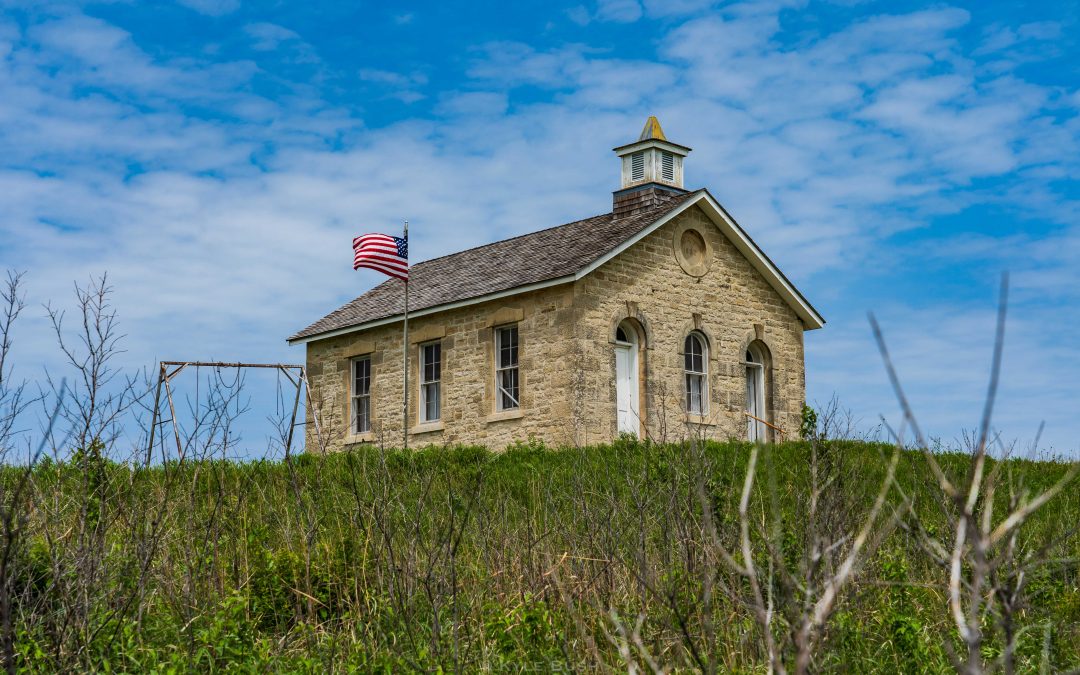(Photo by Kyle Bush)
August 2022
Cover Story
One-room schoolhouses still educate visitors
Schools housed generations of young learners in 19th, early 20th centuries
by Corbin Crable
As a new school year begins across the country, it can be easy to forget that one-room schoolhouses, those relics of education from centuries past, remain places of knowledge for students and history enthusiasts alike.
Single-room schools could be found in rural areas both in the United States and abroad – by 1919, according to Forbes.com, around 200,000 dotted rural landscapes in all; these institutions served an important role in molding young minds, especially in 19th- and early 20th-century America. The differences between one-room schoolhouses and the schools of today, of course, are vast. In those one-room schools, students of varying ages – usually grades 1 through 8 — would learn from one teacher – typically, a young woman; most schools could accommodate as few as six or as many as 40 students, according to the “America’s Story” project from the U.S. Library of Congress.
“The teacher’s desk may have been on a raised platform at the front of the room, and there would have been a wood-burning stove since there was no other source of heat,” according to the America’s Story site. “The bathroom would have been outside in an outhouse.”
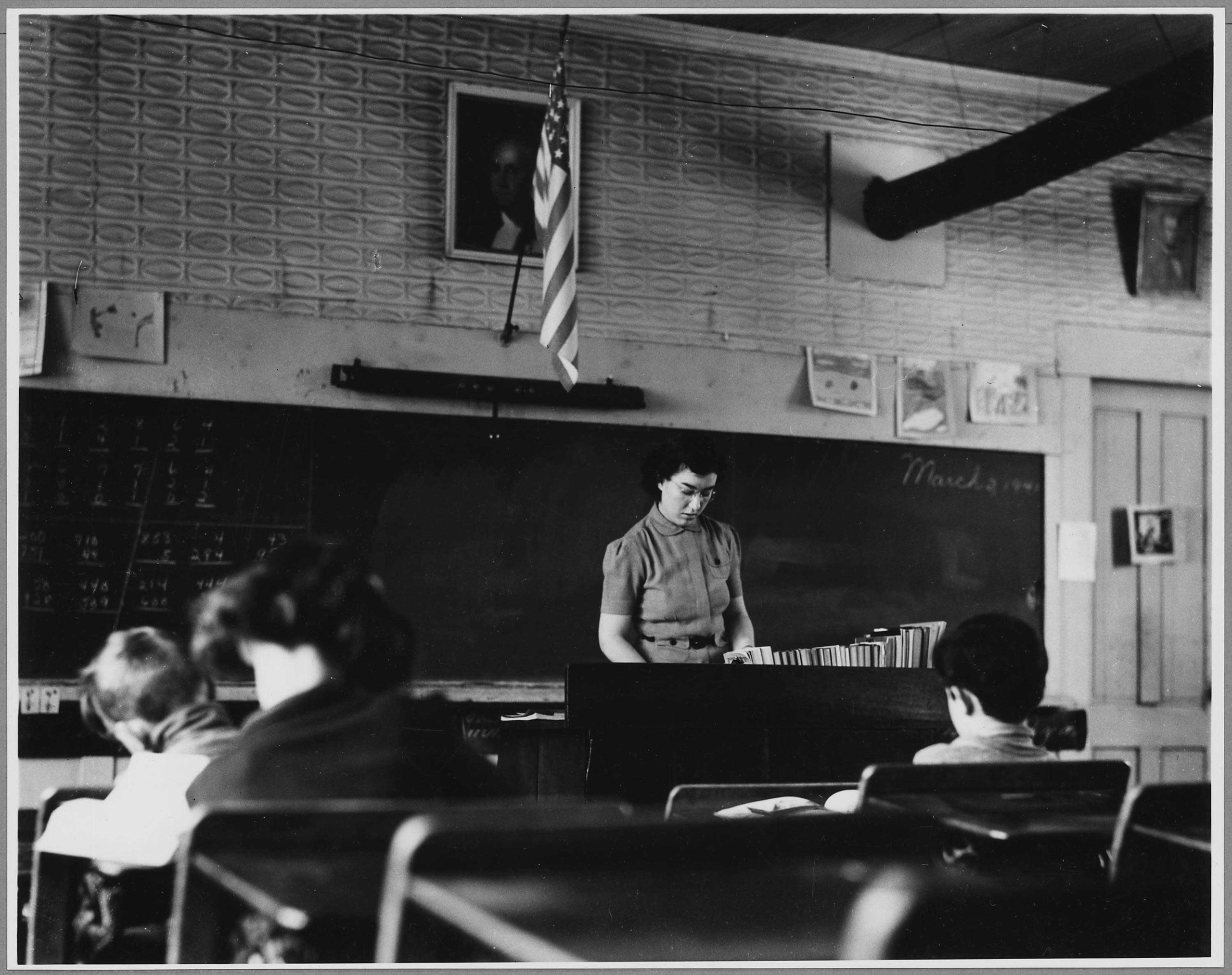
Teachers in one-room schools
Teachers in one-room schools were usually young women. (Image courtesy of Ancestry)
Tutoring the younger kids
The youngest of the students usually would sit at desks in the front of the classroom, while the oldest sat in the back of the room. Rarely did the older students need to be reminded to help the younger ones, as it was expected of them. And besides, according to the America’s Story site – the older students were all too eager to help their younger counterparts with their studies.
“‘Limited’ by one teacher, the students often helped with the teaching; older kids or those who mastered material more quickly would help others. A student who was advanced in math, for example, could simply do math with the older kids,” writes Brandon Busteed in a 2020 article on Forbes.com (Busteed’s father attended a one-room schoolhouse in Elgin, NE). “Because there was more fluidity in the learning, the one-room schoolhouse became more of a community-based education where everyone had to pitch in to some extent.”
Not only did these one-room schoolhouses make up the nucleus of a child’s education; quite often, they were the social and civic epicenter of the small towns in which they were located.
“The schoolhouse was the center and focus for thousands of rural communities, hamlets and small towns,” according to a website memorializing the Gunn School in Holt, MI. “Often, town meetings and picnics were also held there. They hosted plays, dances, box socials, spelling bees, and Christmas pageants.”
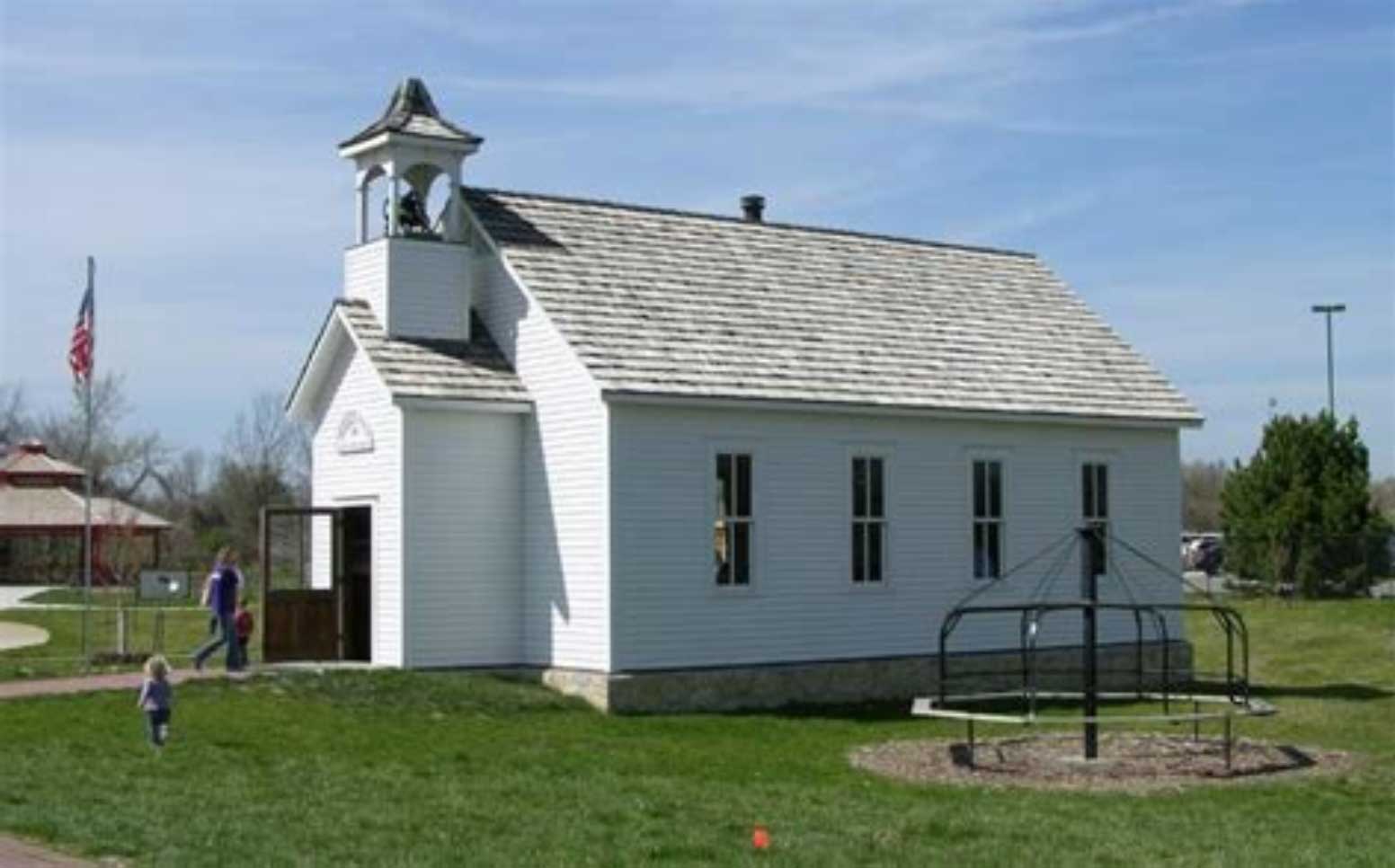
One-room schoolhouse at Deanna Rose
The one-room schoolhouse at Deanna Rose Children’s Farmstead in Overland Park, KS, allows kids of all ages to visit the past. (Image courtesy of Deanna Rose Children’s Farmstead)
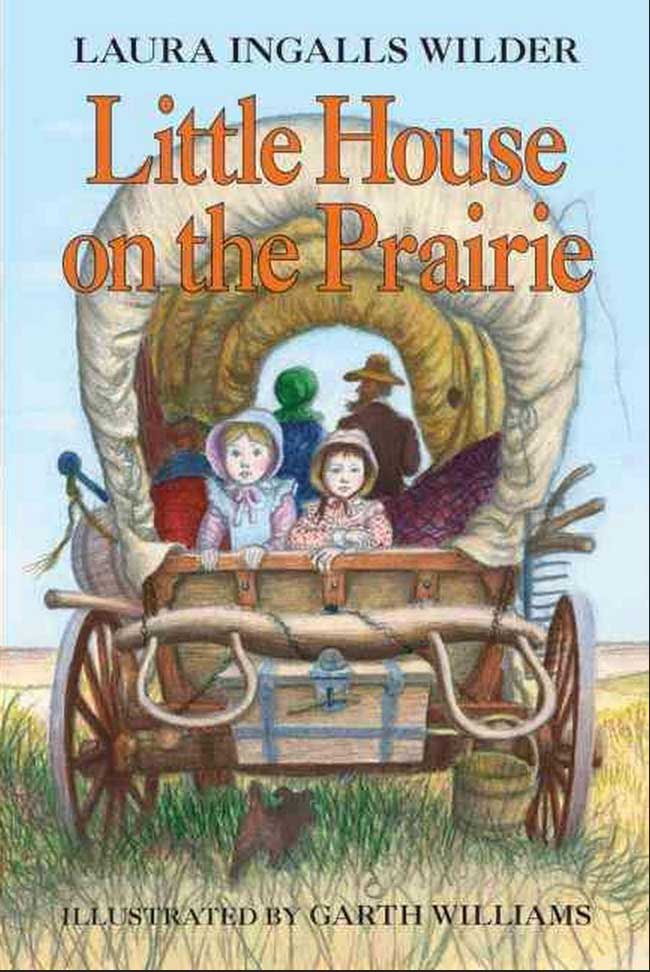
Author Laura Ingalls Wilder’s “Little House on the Prairie”
Author Laura Ingalls Wilder’s “Little House on the Prairie” series painted a vivid picture of life inside a one-room schoolhouse in the 1800s. (Image courtesy of Ebay)
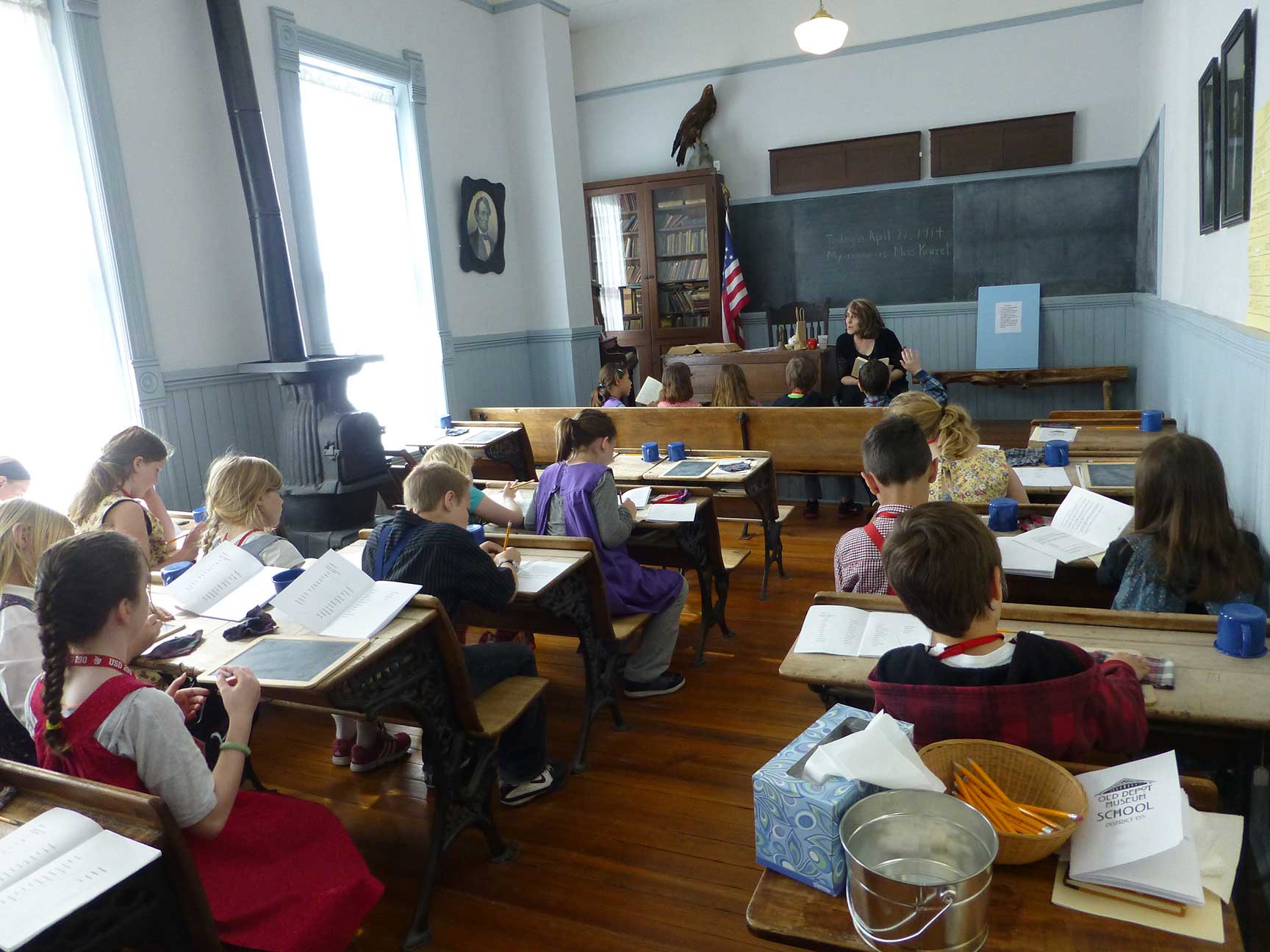
Fourth-graders visit a one-room schoolhouse
Fourth-graders visit a one-room schoolhouse in Ottawa, KS, to get a glimpse of how students received their education in the early 20th century. )Image courtesy of The Old Depot Museum)
“When I was your age…”
Students in one-room schoolhouses likely would have learned from The McGuffey Reader, first published in 1836. The readers taught students from grades 1-6 how to read using the phonics method and heavily utilized the slates and chalk that each student received at the beginning of the academic year in requiring students to replicate certain sentences or other vocabulary words.
The separation of religion and education was still a distant concept during the time of the one-room schoolhouse. In addition to the McGuffey Readers, students also learned reading from the Bible, which their teacher used alongside other teaching aids. In fact, many teachers opened their school day by leading the students in prayer, according to the Fort Hays (KS) State University Archives, which published an oral history project in which former students and teachers from schoolhouses in the region were interviewed about their experiences.
The earliest McGuffey Readers incorporated passages on national unity, piety and righteousness, and some remain in use today in evangelical Christian homeschooling, author Johann Neem writes in the summer 2018 edition of The Hedgehog Review.
No matter what their school day was like, Forbes’ Busteed says, those studious children grew up into the parents and grandparents who lightly admonished their kids and grandkids by reminding them how privileged their educational experiences are and saying, “When I was your age, I had to walk miles to school in the snow.”
“To this day, he loves sharing stories about it with his grandchildren,” Busteed says of his grandfather, “mainly bragging about how he had to ride his pony several miles to school (including through severe snowstorms).”
Closures of schools continue, but lessons remain
Though class hasn’t been in session at most one-room schoolhouses for many decades, some 200 remain open to mold the young minds of students in remote areas, according to the U.S. National Register of Historic Places.
But those schools struggle to remain open, many instead being absorbed by other school districts nearby as families move to more populated areas for better job opportunities. One such school was the Glen School in Sioux County, NE, which had only three students enrolled as of a decade ago. NPR’s Neenah Ellis first visited the school in 2005 and met the last three students attending the school.
“The boys at the school — Travis, Luke and Nick — were all the sons of ranchers, their futures more secure than most,” Ellis shared in her broadcast on NPR. “But still, in just a few years, when they graduate from high school, these boys will be faced with hard decisions: Do we stay and work the ranch, or do we leave? And if we leave, can we come back?”
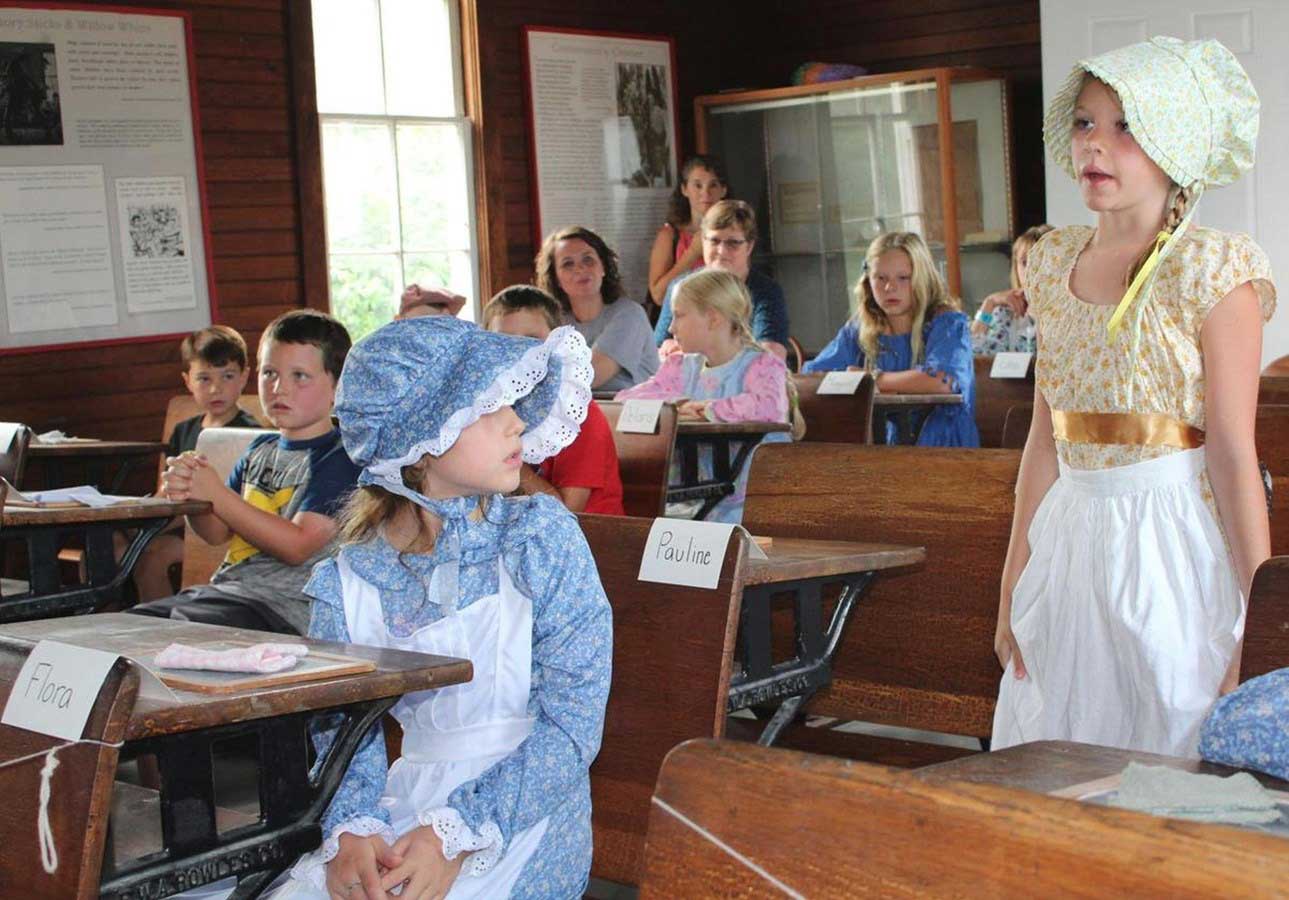
Contemporary students get to hear voices from the past
Contemporary students get to hear voices from the past while visiting the one-room schoolhouse in Hensley Township, IL. (Image courtesy of Museum of the Grand Prairie)
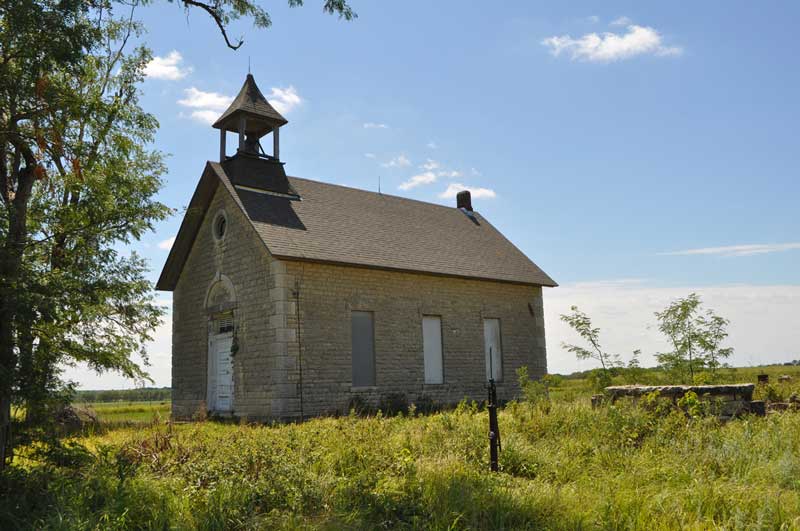
The Bichet School
The Bichet School, built in 1896 and located in Marion County, KS.
(Image courtesy of Wikipedia)
The Glen School’s lone teacher, Mori Hourt, had many of the same responsibilities as an educator at a larger school – “It’s her job to get the boys ready to move on, whether that means high school, college or something else,” Ellis writes.
Within mere months of Ellis’ first visit to The Glen School, the decision came down from the school board to shutter the school. It closed in 2006, one of the last few remaining in the rural farming communities across the nation.
“After 120 years, there would be no school in Glen,” Ellis writes in the conclusion of the article that accompanies her broadcast. “The boys would finish in town. … No one was surprised at the closing of Glen School. They’d all seen it coming for a long time.”
Although the number of one-room schoolhouses continues to shrink every year, the students of today can still indulge in a taste of what life was like for those students of yesteryear. The Old Depot Museum in Ottawa, KS, for instance, allows students to tour the Franklin County one-room schoolhouse and replicate a typical day in the life of a student in 1910. Students dress in period-style clothing, with girls wearing pinafores and boys in suspenders. They recite the Pledge of Allegiance to start their day and receive lessons in subjects like reading, penmanship and music. They even use traditional pens and inkwells, as well as slates for their lessons.
It’s all a part of keeping the culture of one-room schoolhouses alive for children and history buffs alike as trends in education evolve and change, says Mori Hourt of The Glen School.
“You know, I think eventually education is going to have to stop and look at the example set by a one-room school and say, ‘Oh, my, maybe they weren’t deprived,’” Hourt said. “Many, many things have been done correctly in a one-room school and the results are there to read in history, if you just turn the right page.”
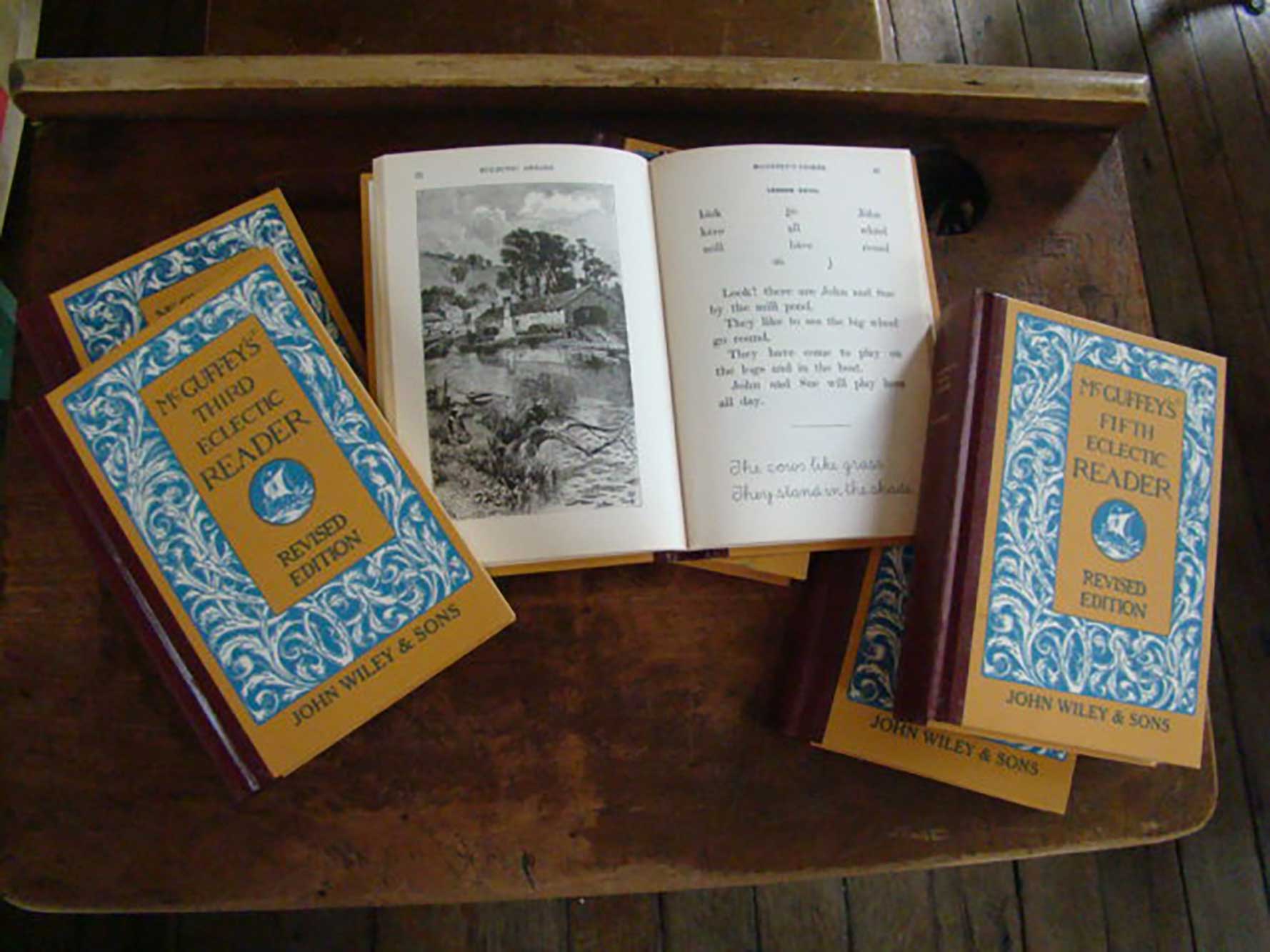
The McGuffey Reader
The McGuffey Reader was the gold standard for teaching students in one-room schoolhouses how to read throughout the 19th century. (Image courtesy of Etsy)
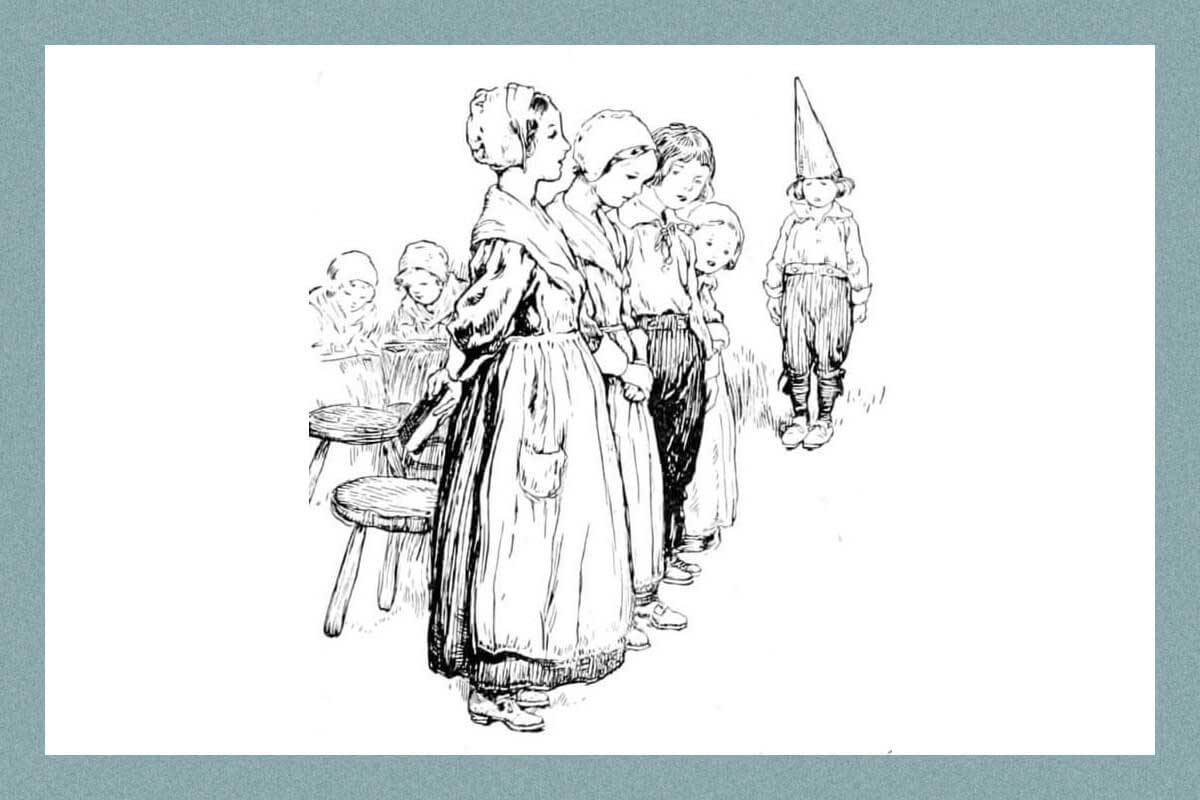
Student wearing a dunce cap
The idea of a misbehaving student wearing a dunce cap and sitting in the corner originated in the one-room schoolhouse, according to Ancestry.
(Image courtesy of Ancestry)


